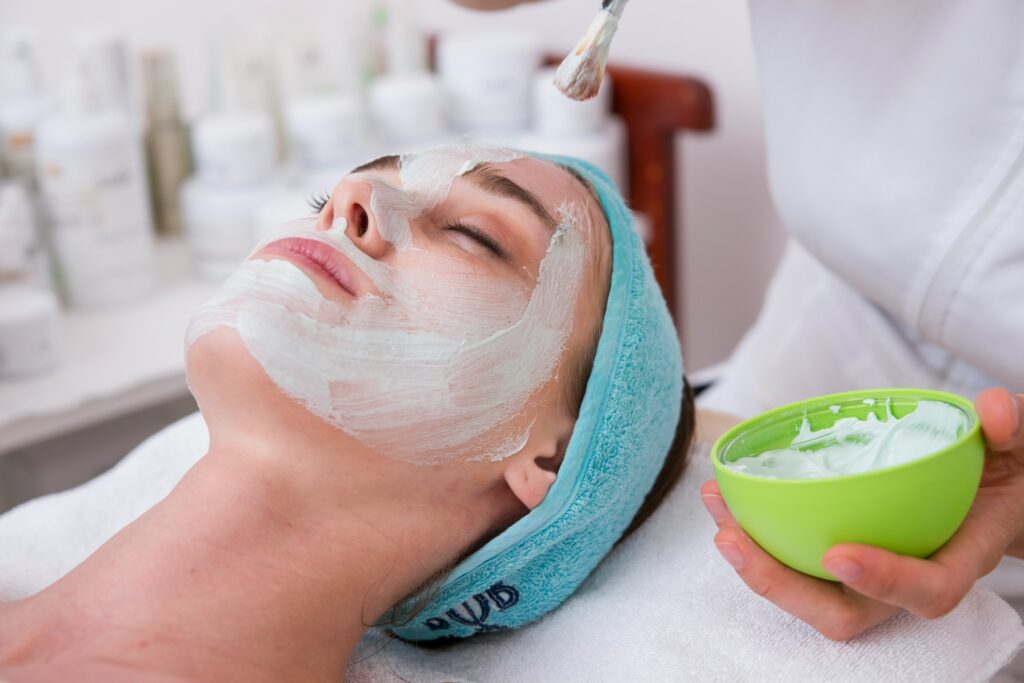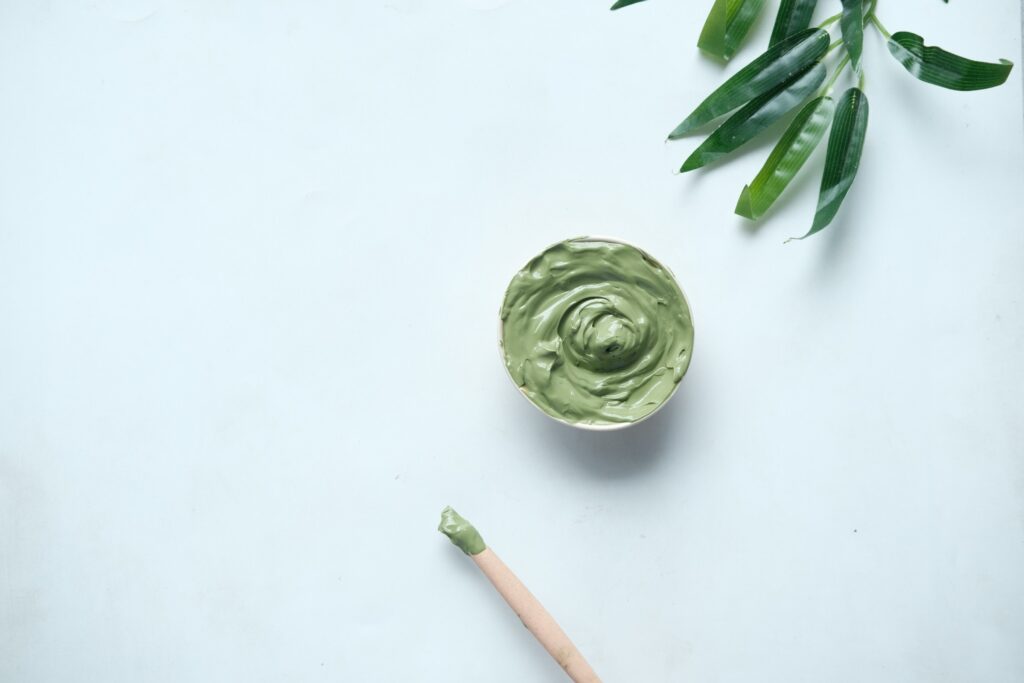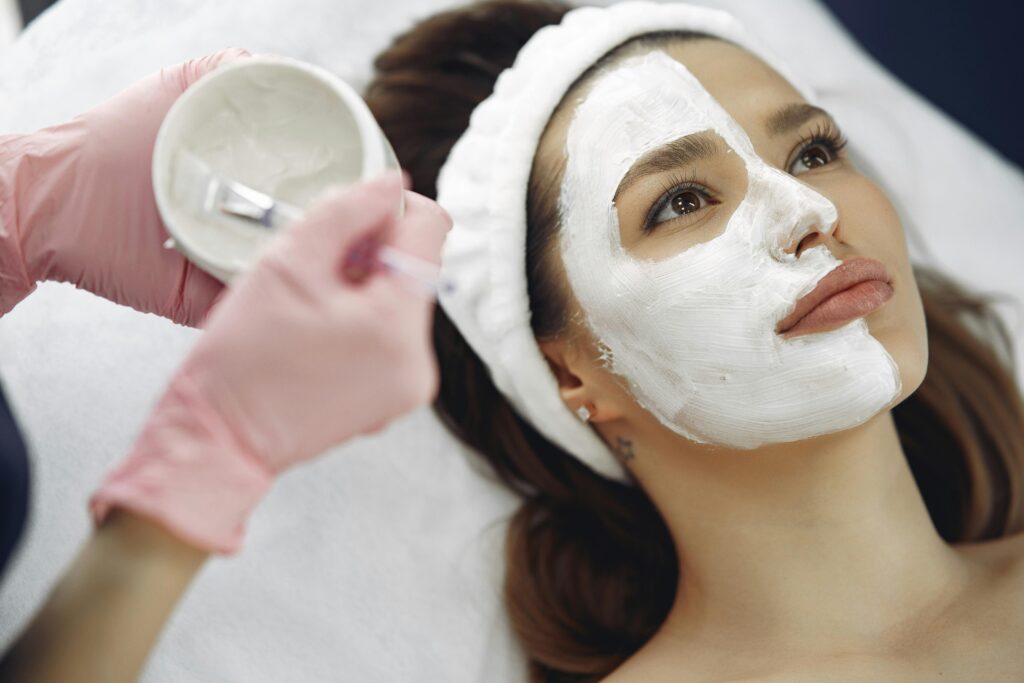
People having dry skin can understand the struggles of dealing with flakiness, rough texture, and a constant need for hydration. It can be challenging for you to find skincare products that can provide the moisture and nourishment your skin craves. One skincare product that has gained popularity in recent years is the clay mask. But the question remains: are clay masks good for dry skin?
In this comprehensive article, we will explore the world of clay masks, their benefits, and how they can be a game-changer for people with dry skin. Before getting straight into the topic, let’s take a closer look at what clay masks and how they work.
What Are Clay Masks And How Do They Work?
These are skincare products that contain various types of clay as their primary ingredient. These clays can include kaolin, bentonite, rhassoul, and French green clay, among others. Each type of clay has its unique properties and benefits for the skin. Clay masks work by absorbing excess oil and impurities from the skin’s surface. They help to exfoliate dead skin cells and promote a clearer complexion. While these benefits are well-known for those with oily or combination skin, you may wonder how they apply to dry skin.
The Science Behind Clay Masks and Skin Hydration
Clay masks work by drawing out toxins and absorbing excess sebum, which is beneficial for oily and acne-prone skin. However, for those with dry skin, this absorbing action can initially seem counterintuitive. Yet, not all clay masks are created equal. Some clays have milder properties and can be formulated with hydrating ingredients, making them suitable for dry skin types.


Are Clay Masks Good for Dry Skin?
Yes, clay masks have been proven beneficial for dry skin. While their primary feature is to absorb excessive oil from, they can also be drying, especially for those with dry or sensitive skin. Here’s why:
- Absorption Power: Clay’s main function is to absorb, which can strip away natural oils that your dry skin needs to stay hydrated and healthy.
- Tightening Effect: The tightening sensation you feel after using a clay mask can be caused by the clay drying out the skin’s surface.
So, if you have dry skin, using clay masks too often or for too long can actually worsen your dryness and make your skin feel tight, itchy, and irritated.
Also Read: Revitalize Your Skin Naturally: Discover 08 Best Homemade Toners for Dry Skin
What Are The Benefits of Clay Masks for Dry Skin?
It might surprise you to learn that clay masks can indeed be beneficial for dry skin when used correctly. Let’s explore the reasons why clay masks can be a valuable addition to your skincare routine if you have dry skin.
1. Gentle Exfoliation
Dry skin can often appear dull and flaky due to the accumulation of dead skin cells on the surface. In cosmetology, exfoliation is the process of removing dead skin cells from the outer layer of the skin. Clay masks provide a gentle exfoliation that helps remove these dead cells, revealing smoother and more radiant skin underneath.
2. Hydration Retention
Clay masks do not necessarily strip the skin of moisture. Some clay masks, especially those infused with hydrating ingredients like glycerin or aloe vera, can actually help the skin retain moisture while drawing out impurities.
3. Improved Circulation
Applying a clay mask to your skin can stimulate blood flow and circulation. This increased circulation can help deliver essential nutrients to your skin cells, promoting overall skin health.
4. Detoxification
Clay masks have natural detoxifying properties. They can draw out toxins and impurities that may be contributing to skin issues. For individuals with dry skin, the removal of these impurities can lead to a clearer and healthier complexion.
5. Preparing the Skin for Moisturization
One of the most significant benefits of clay masks for dry skin is their ability to prepare the skin for better absorption of moisturizers and serums. By removing dead skin cells and unclogging pores, clay masks create a clean canvas for your moisturizing products to penetrate deeply.
Choosing the Right Clay Mask for Dry Skin
Not all clay masks are created equal, and it’s essential to select the right one for your specific skincare needs. Here are some tips to help you choose the perfect clay mask for dry skin:
1. Look for Hydrating Ingredients
When shopping for a clay mask, check the ingredient list for hydrating components such as hyaluronic acid, aloe vera, or shea butters. These ingredients can help offset any potential drying effects of the clay.
2. Opt for Gentle Clays
Kaolin and rose clay are known for their gentle and soothing properties, making them suitable choices for dry skin. These clays can provide the benefits of a clay mask without over-drying the skin.
3. Patch Test First
Before applying any new skincare product to your face, it’s always a good idea to perform a patch test. Apply a small amount of the clay mask to a discrete area of your skin, such as the jawline, and wait for 24 hours to check for any adverse reactions.
Also Read: Postbiotic Skincare: What are Postbiotics and How Do They Benefit the Skin?
Using Clay Masks for Dry Skin: A Step-by-Step Guide
Now that you’ve chosen the right clay mask for your dry skin, let’s go through a step-by-step guide on how to use it effectively.


Step 1: Cleanse Your Skin
Start with a clean canvas. Use a gentle cleanser to remove any makeup, dirt, or impurities from your face. Pat your skin dry with a clean towel.
Step 2: Apply the Clay Mask
Using a clean brush or your fingertips, apply a generous layer of the clay mask to your face and neck. Avoid the delicate area around your eyes and lips.
Step 3: Relax and Wait
Set a timer for the recommended time mentioned on the product label. Typically, you should leave the mask on for 10-15 minutes, but this can vary depending on the specific mask you’re using.
Step 4: Rinse Thoroughly
Once the time is up, use lukewarm water to gently rinse off the clay mask. Make sure to remove all traces of the mask to prevent any potential irritation.
Step 5: Follow with Moisturizer
After patting your skin dry with a clean towel, immediately follow up with a moisturizer suited for dry skin. This will help lock in the benefits of the mask and keep your skin hydrated.
Final Thoughts
In conclusion, clay masks can indeed be a valuable addition to your skincare routine if you have dry skin. They offer gentle exfoliation, help retain moisture, improve circulation, detoxify the skin, and prepare it for better absorption of moisturizers. By choosing the right clay mask with hydrating ingredients and gentle clays, you can enjoy the benefits without worrying about excessive dryness.
So, the next time you ask yourself, “are clay masks good for dry skin?” Remember that when used correctly and with the right product, clay masks can be a game-changer for achieving healthier, more radiant skin. If you’re ready to experience the benefits of clay masks for dry skin, check out our selection of clay masks specifically curated for dry skin types. Embrace the magic of clay masks and let your dry skin bask in their glow-enhancing, hydrating benefits. Say goodbye to dryness and hello to a more luminous complexion today!
FAQs: Are Clay Masks Good for Dry Skin?
Clay masks are known for their purifying and oil-absorbing properties, but can they benefit dry skin too? Here are some frequently asked questions to shed light on this:
Q.1. Can dry skin benefit from clay masks?
Dry skin craves moisture, and traditional clay masks, known for absorbing oil, might seem counterintuitive. However, specific clay types and proper application can actually help dry skin. Kaolin clay, for example, is gentler and helps draw out impurities without excessive drying. The key is to choose a clay mask formulated for dry skin, often containing hydrating ingredients like hyaluronic acid or honey.
Q.2. How often should I use a clay mask if I have dry skin?
Unlike oily skin which can benefit from more frequent use, dry skin needs a gentler approach. Limit clay masks to once a week, or even less frequently depending on your skin’s sensitivity. Over-exfoliation can worsen dryness, so listen to your skin.
Q.3. How can I ensure a clay mask doesn’t dry out my skin further?
Here are some key tips:
- Pre-mask prep: Before applying the mask, gently cleanse your face and pat it dry. Apply a thin layer of moisturizer to create a barrier and prevent excessive absorption of natural oils.
- Mask application: Look for clay masks with hydrating ingredients and apply a thin, even layer. Don’t let the mask dry completely; mist your face with water or a hydrating toner to keep it slightly damp.
- Mask removal: Once the mask starts to tighten (around 10-15 minutes), rinse it thoroughly with lukewarm water. Avoid using hot water which can further strip away moisture.
Q.4. What ingredients should I look for in a clay mask for dry skin?
While the type of clay is important (kaolin or red clay are good choices), focus on masks that contain hydrating and soothing ingredients. Hyaluronic acid, glycerin, honey, aloe vera, and ceramides are all excellent choices for dry skin.
Q.5. What ingredients should I avoid in a clay mask for dry skin?
Fragrances, alcohol, and harsh exfoliating agents can irritate dry skin. Opt for fragrance-free masks and skip any with ingredients known to be drying.
Q.6. Should I follow up a clay mask with a moisturizer for dry skin?
Absolutely! After rinsing the mask, pat your face dry and apply a generous layer of your regular moisturizer. You can even use a thicker night cream for extra hydration.
Q.7. Can I make a homemade clay mask for dry skin?
While tempting, homemade masks can be tricky. Clay powder can be abrasive if not properly sourced, and other ingredients might not be balanced for your skin type. It’s generally safer to choose a commercially prepared mask formulated for dry skin.
Q.8. Are there any side effects of using clay masks on dry skin?
Overuse or improper application of clay masks can lead to dryness, redness, and irritation. If you experience any discomfort, discontinue use and consult a dermatologist.
Q.9. What if my dry skin is also acne-prone?
There are clay masks formulated for combination skin that address both dryness and blemishes. Look for masks containing kaolin clay with ingredients that fight acne, such as benzoyl peroxide or salicylic acid. However, spot testing is crucial to avoid irritation.
Q.10. When should I see a dermatologist about using clay masks?
If you have very sensitive skin, eczema, or rosacea, consult a dermatologist before using any clay mask. They will recommend the best course of action for your specific needs.

